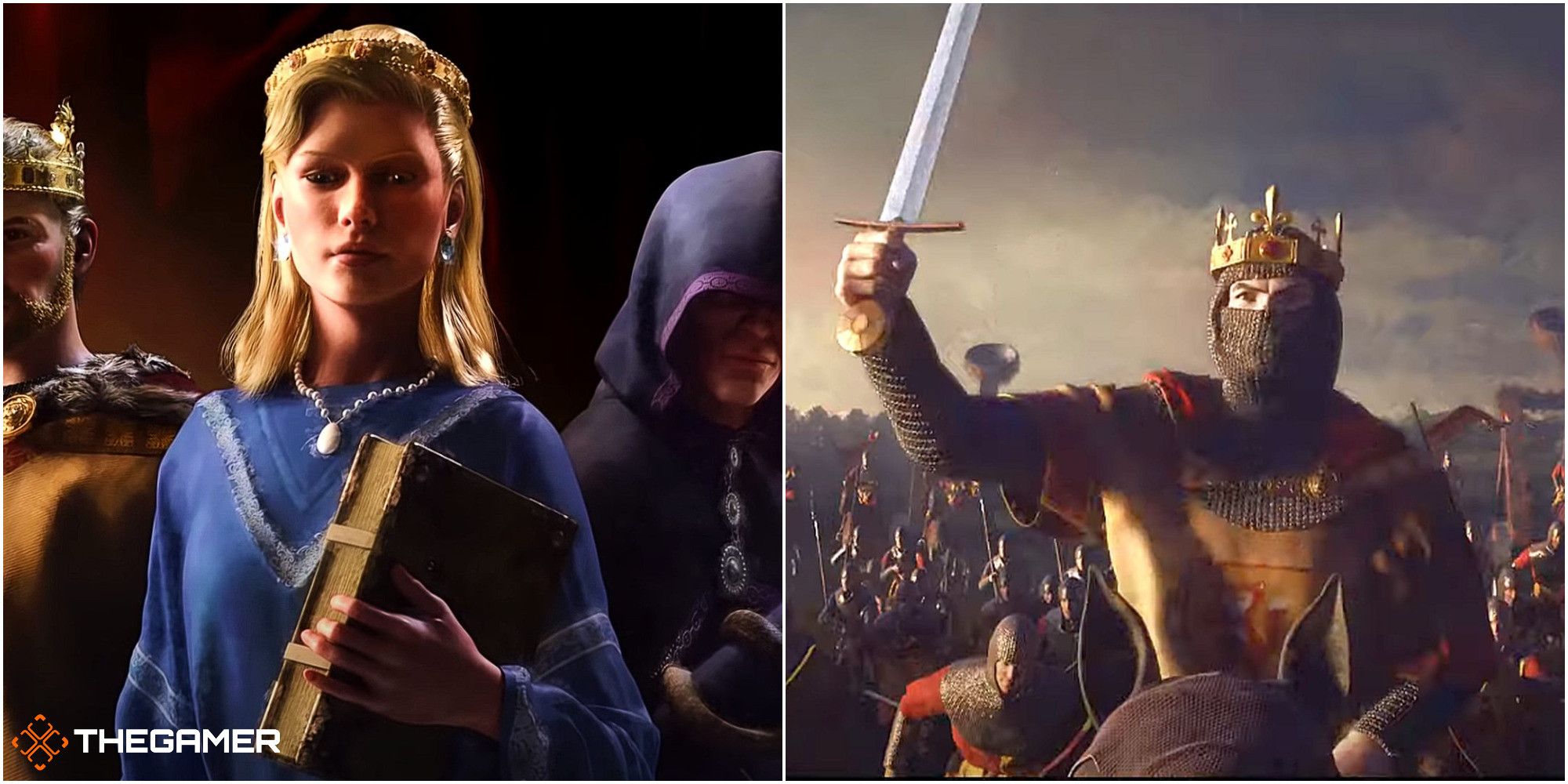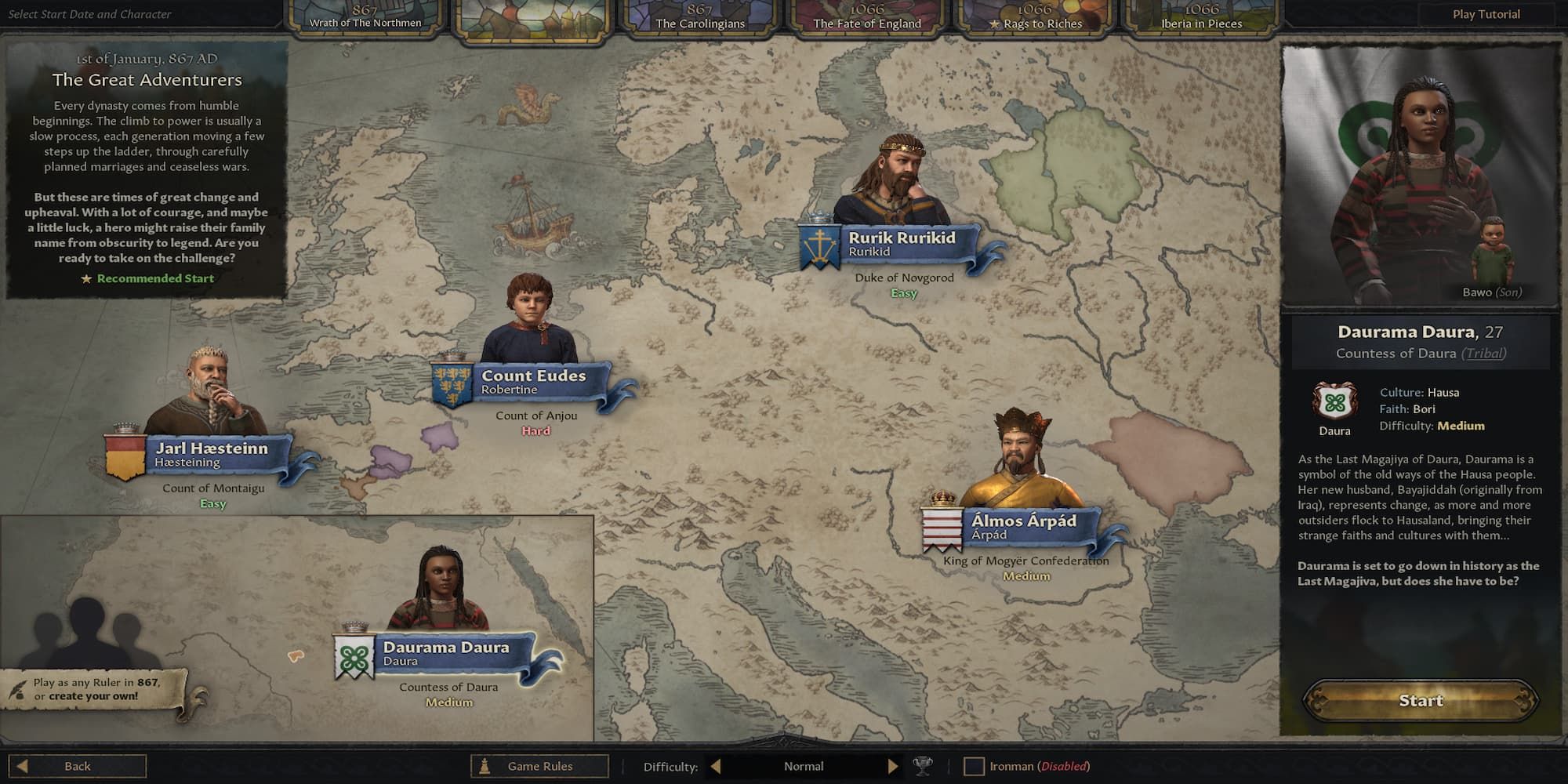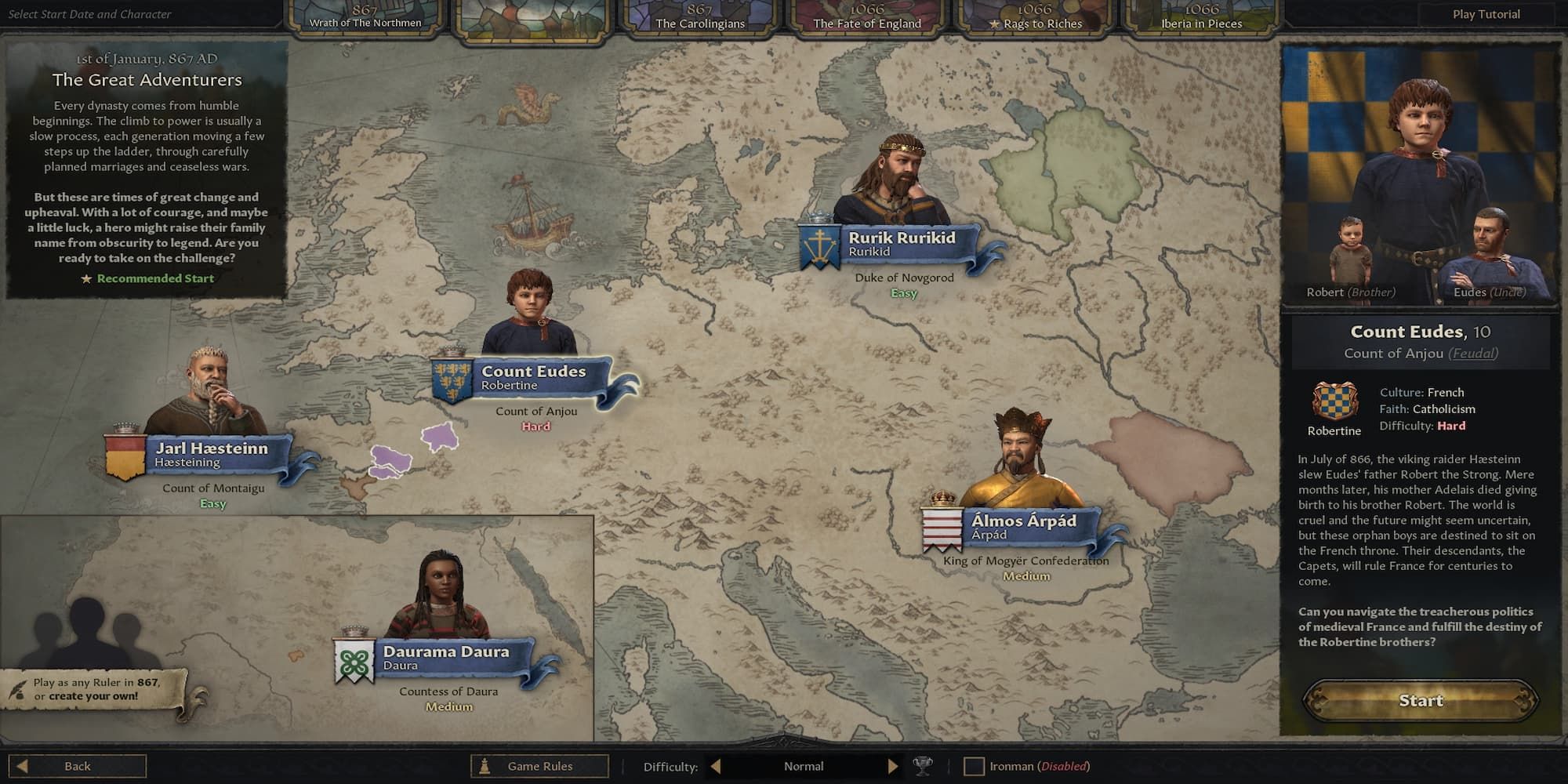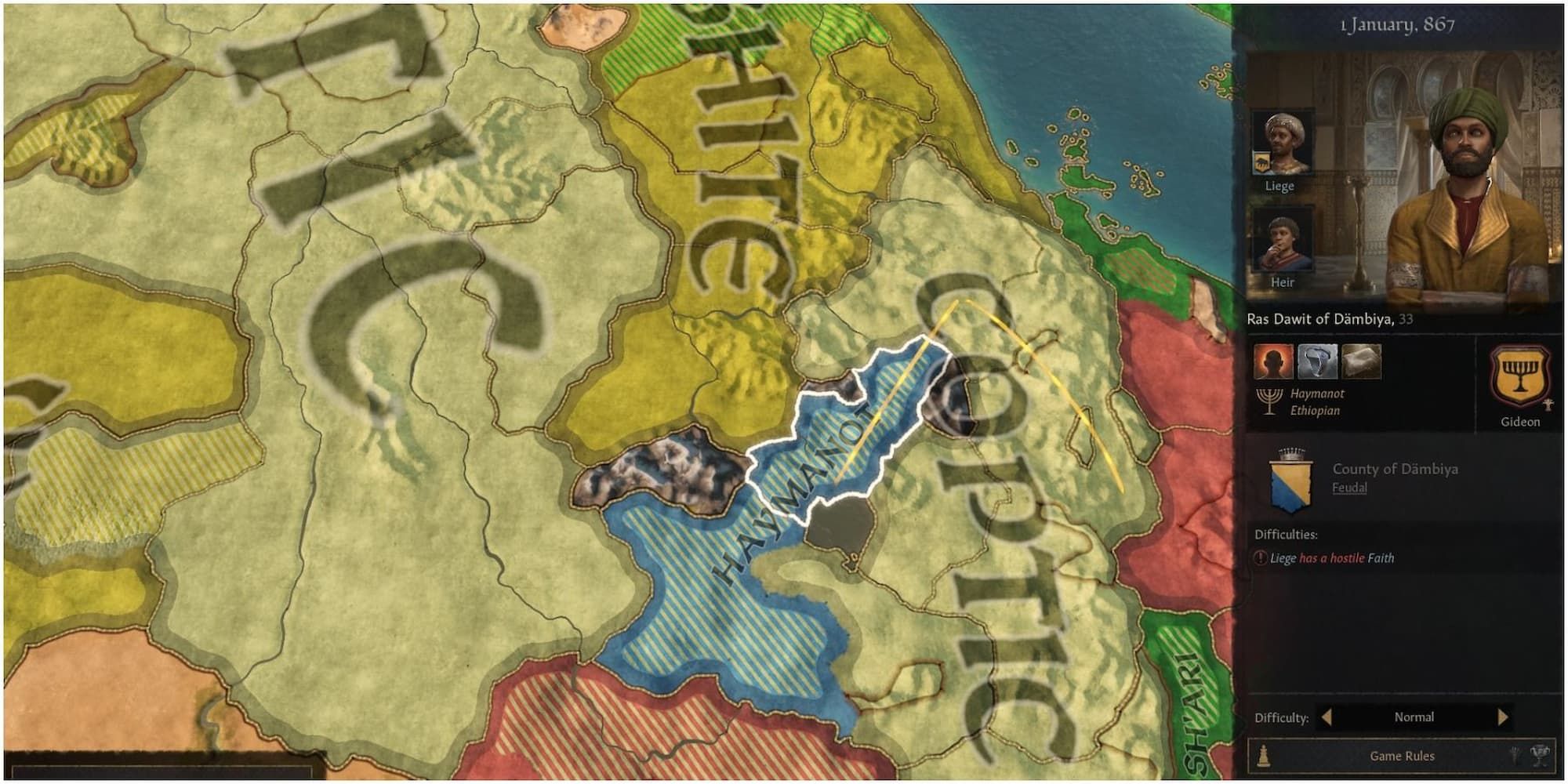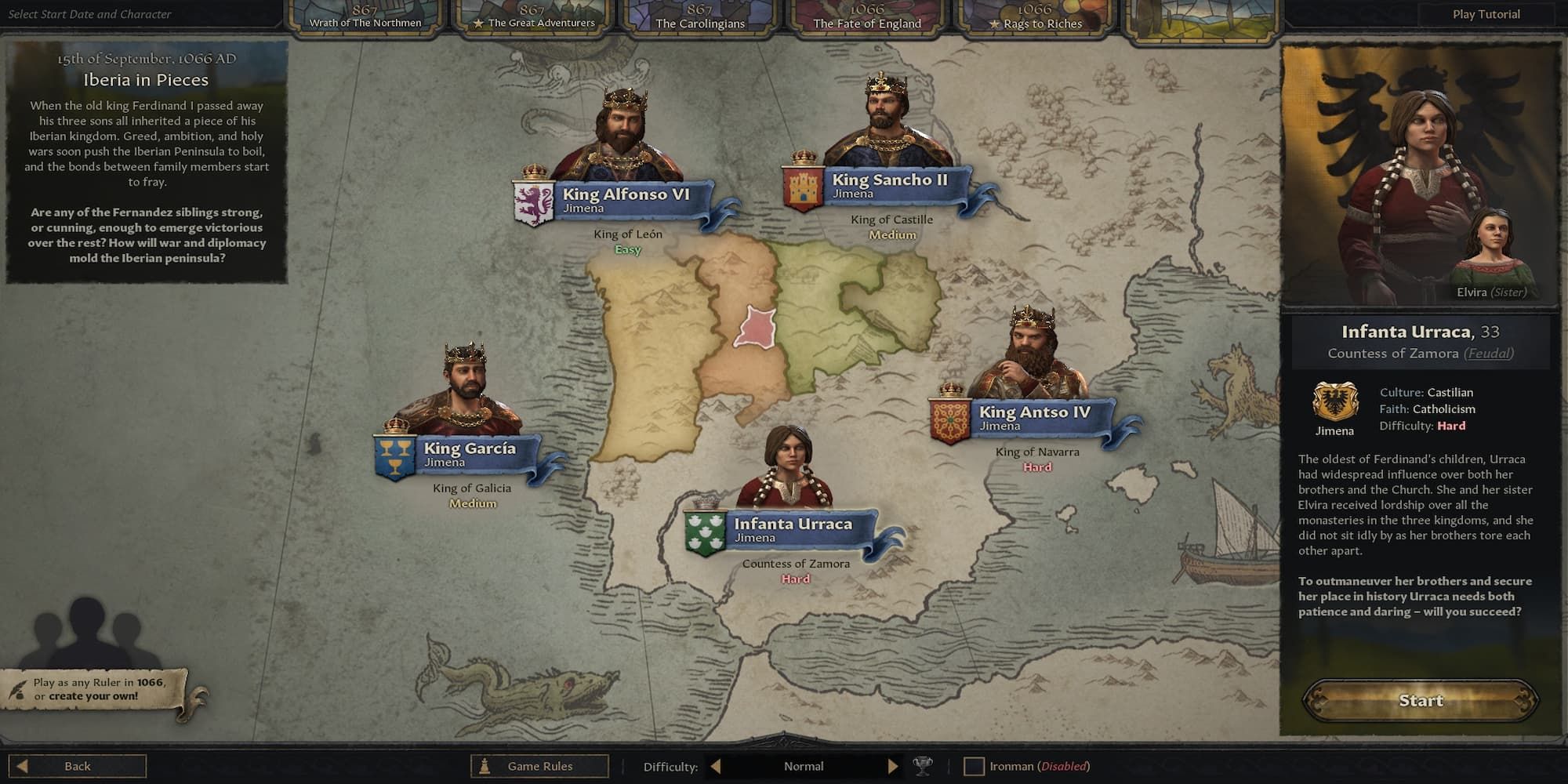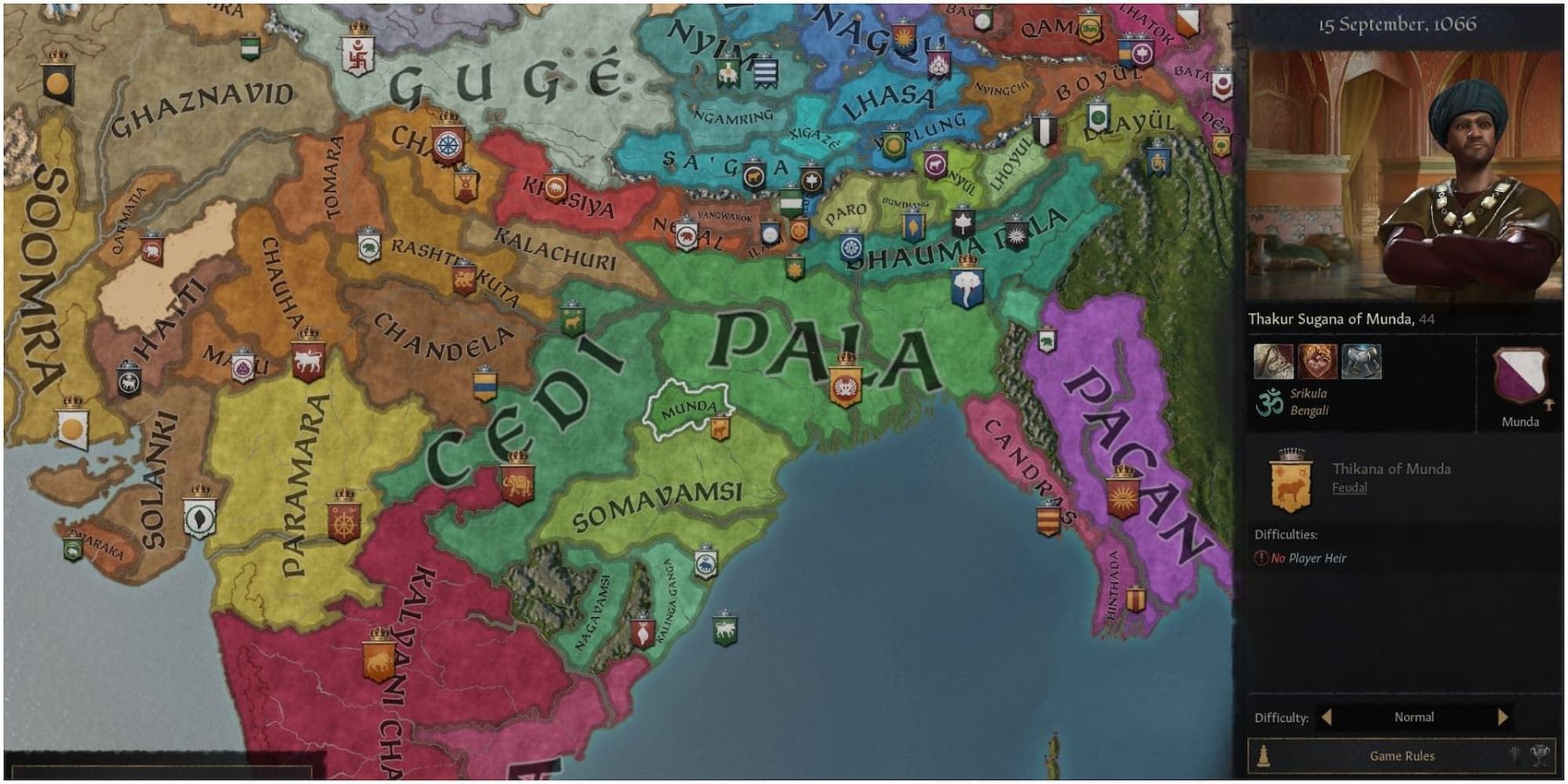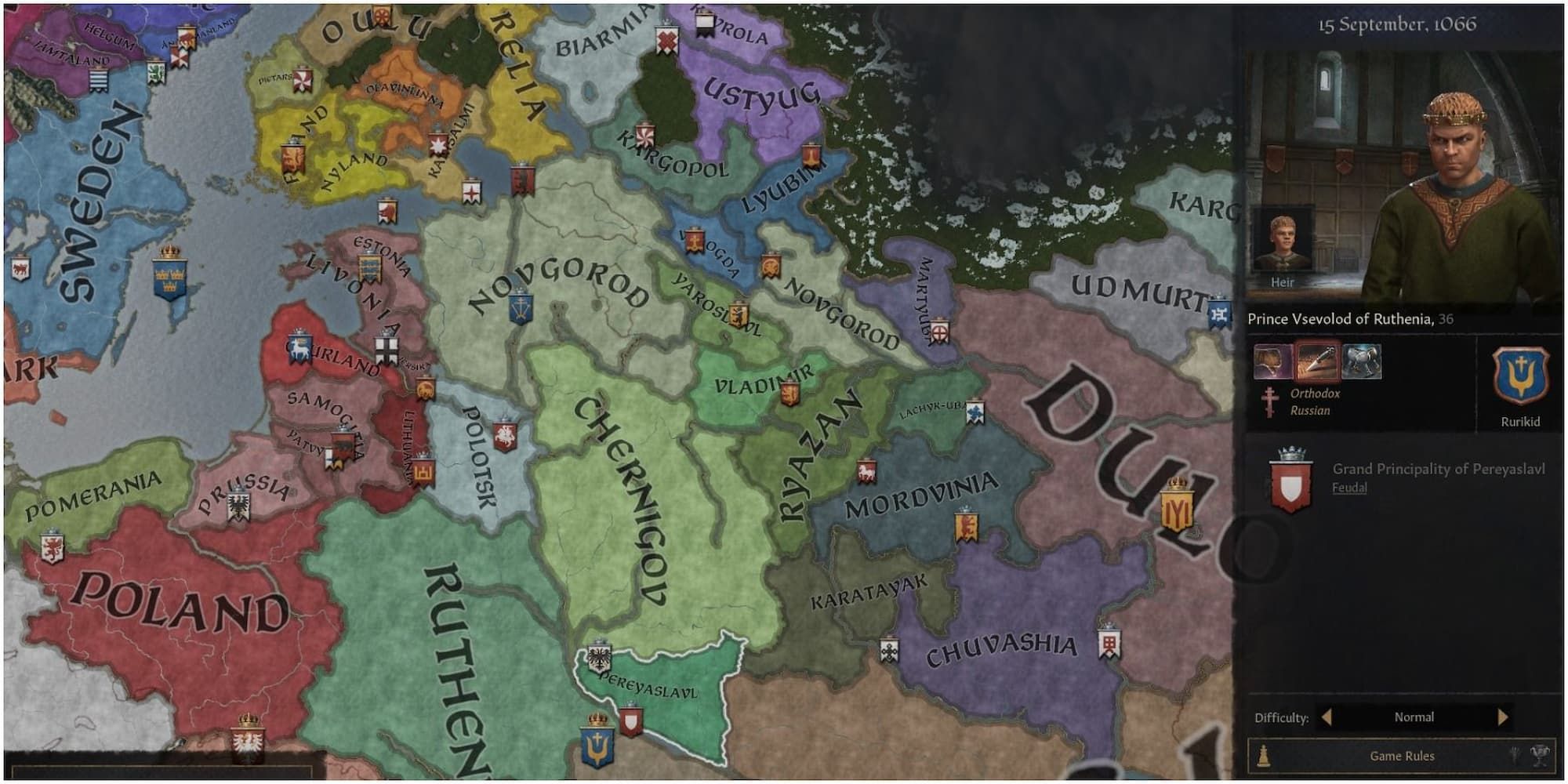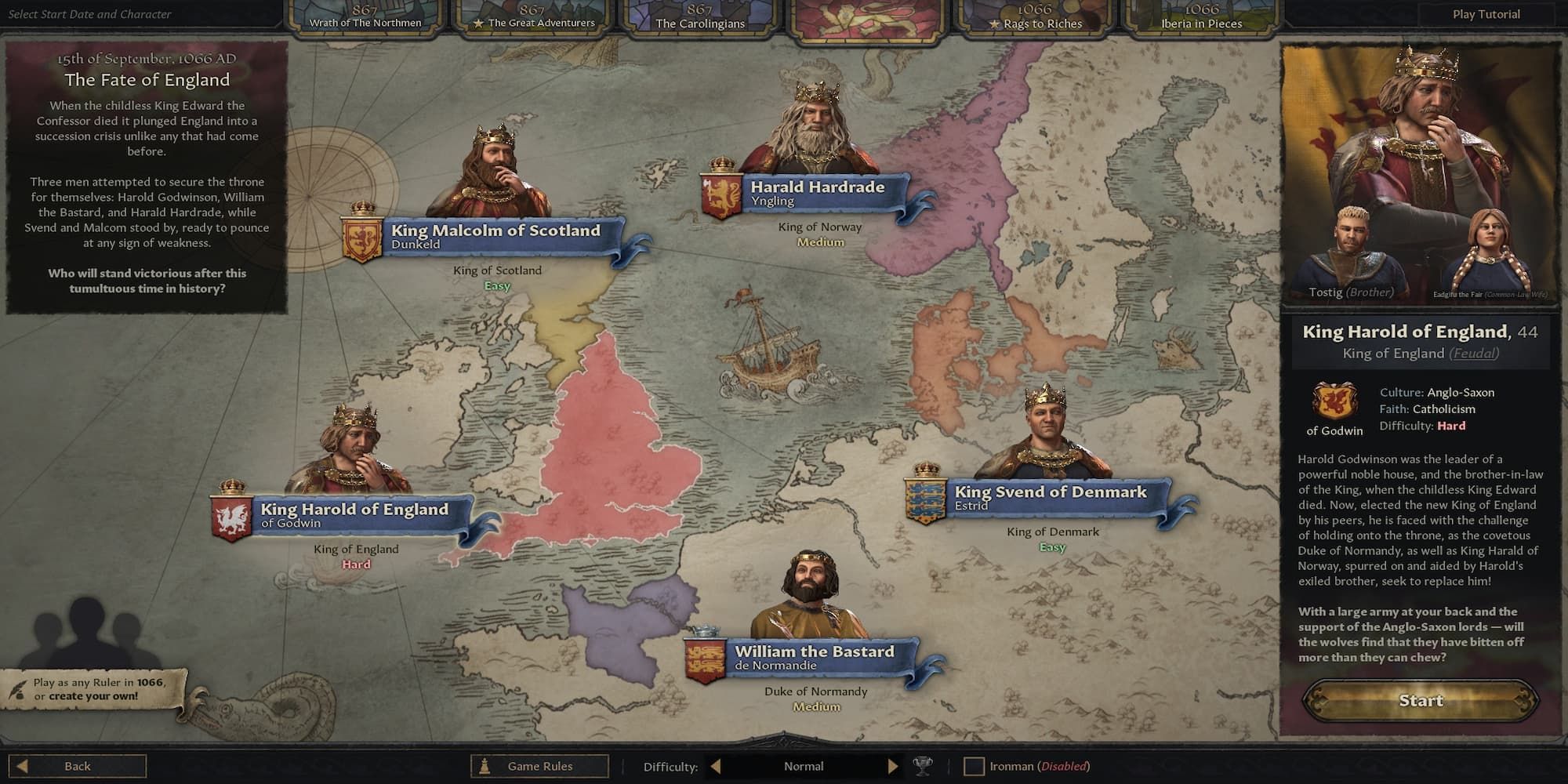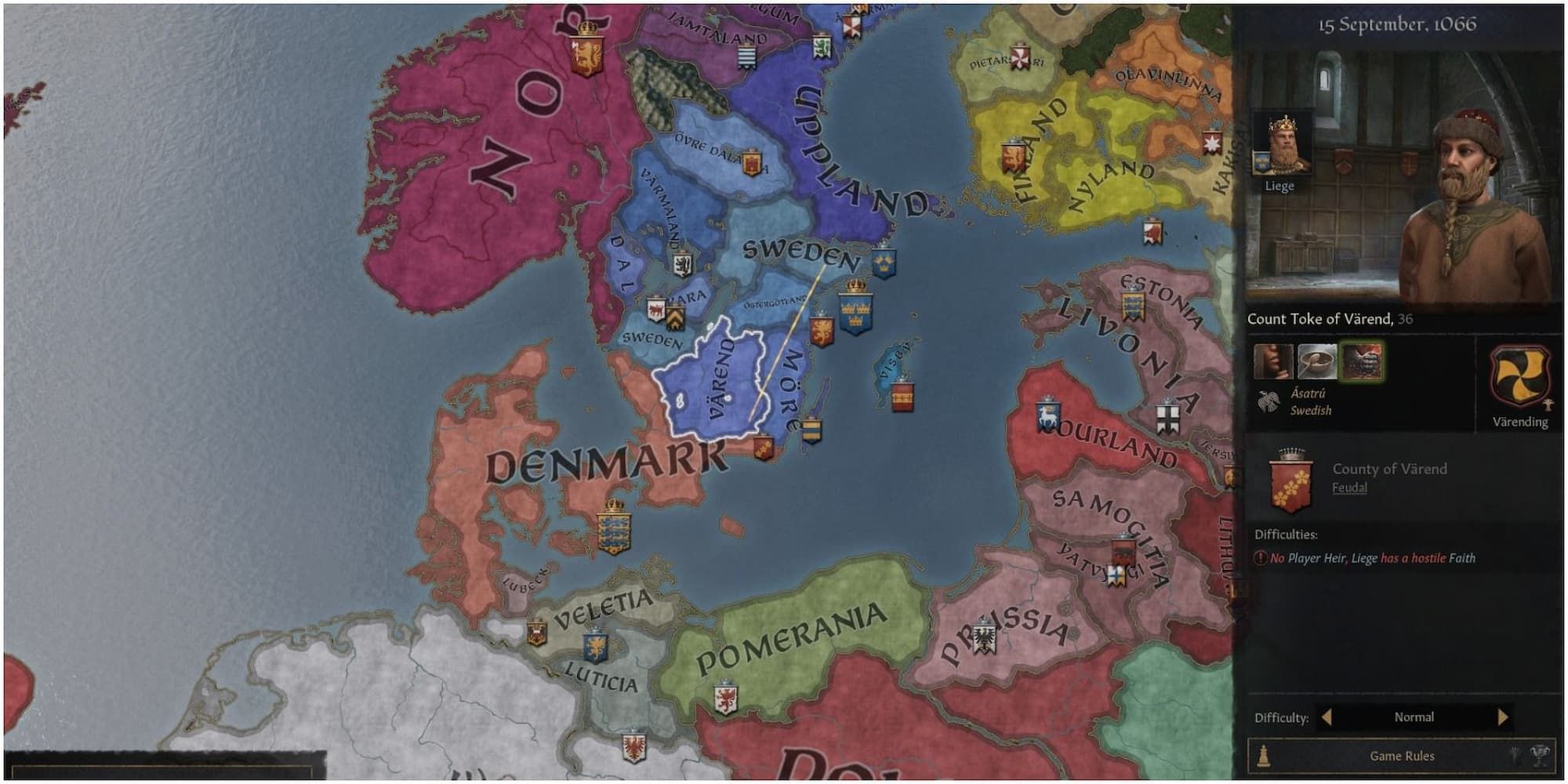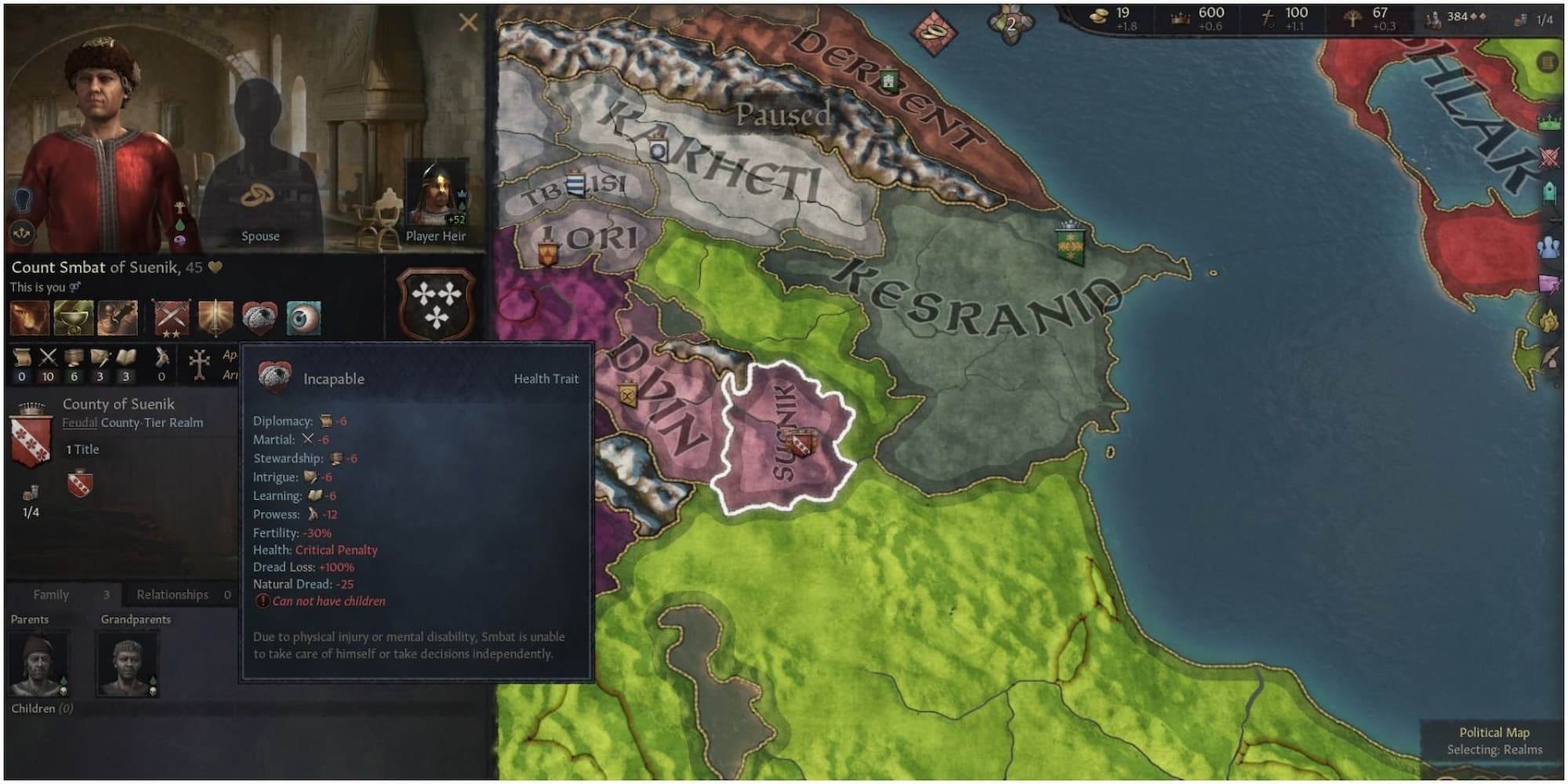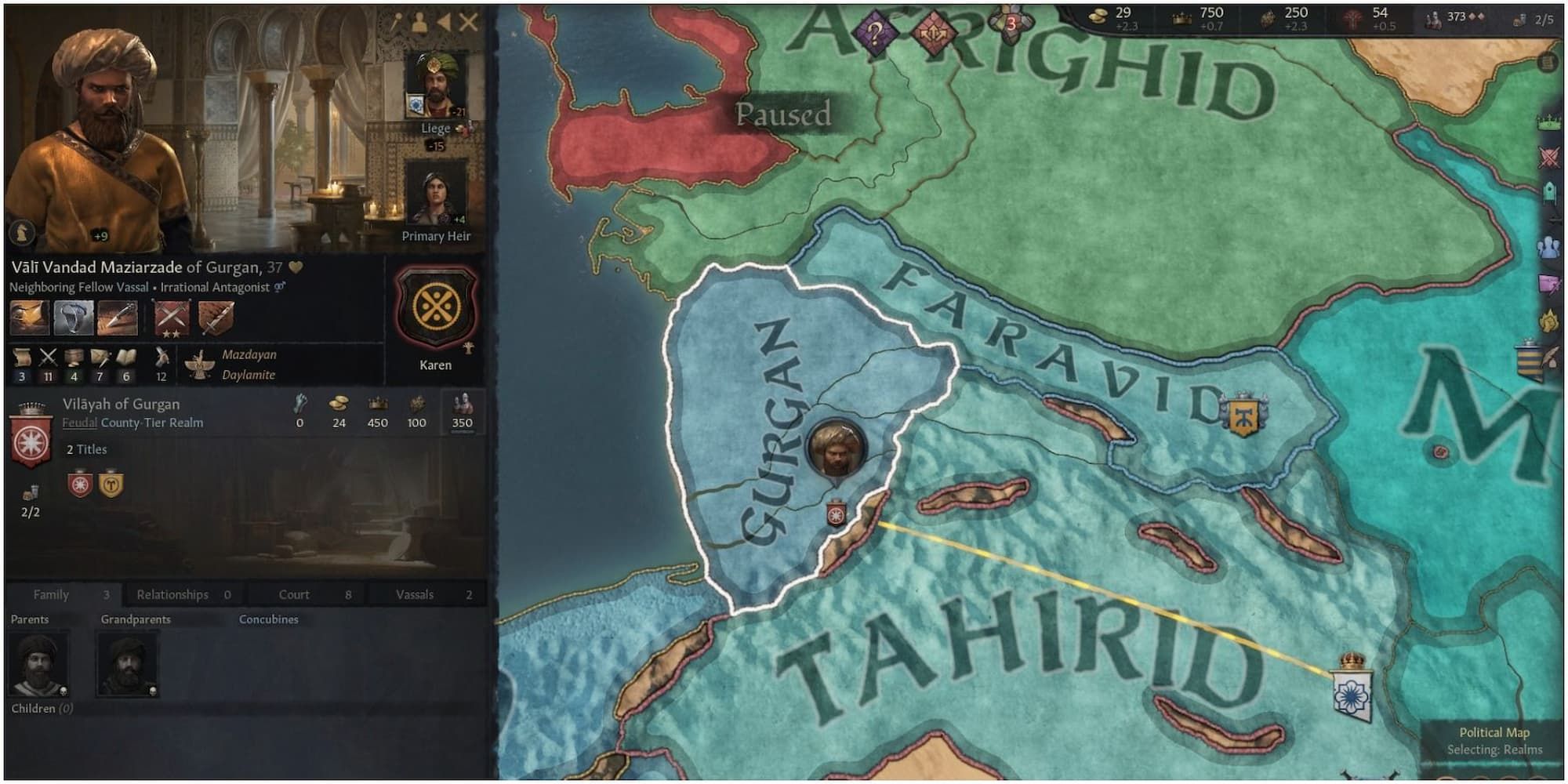It's along the sordid, chaotic lifetimes of Crusader Kings 3 characters that most of their challenges pop up. Some characters, though, just have it rough from the very beginning — whether it's due to possessing no natural heirs, being a child themselves during times of great upheaval, a treacherous court, an immediate threat from another kingdom, or some other impending disaster on the horizon.
Something to note when perusing rulers: many seem to be without any family, but will in fact have one generated for them as long as "Generate Families" in Game Rules is set to "On." For a harder early game, players should forego having an heir at the start of play. Something else to be aware of is that almost all rulers seem to have their traits randomized. It can be hard to anticipate what those mystery characters are capable of.
Updated September 11, 2021 by Allisa James: Crusader Kings 3 continues to be incredibly popular among its user base, thanks to its rich and accurate depiction of historical events, religions, cultures, and ethnicities, political intrigue at every turn, and well-executed simulation gameplay. But what truly gives the game its edge are the unique challenges of the rulers, namely Crusader Kings 3's hardest starting characters, which give players ample reason to come back for more.
10 Daurama Daura of Daura, 867 AD
Despite being labeled as Medium difficulty, the beginning of Daura's campaign is paved with some serious challenges. To start, she is the last Magajiya ruler of the Hausa people, as historically power transferred from the matriarchal royal family during her reign. Her firstborn child is neither heir to her throne nor even shares her faith, but instead a part of her husband's court and Muslim culture.
The current heir, her half-sister, is easy to replace but the cost of converting Daura's firstborn son is gaining animosity from her husband. Giving birth to another child heir is a solid option, as long as the baby isn't from any consorts that is. Though her path isn't the trickiest to navigate, some aspects can easily trip up less experienced players.
9 Count Eudes of Anjou, 867 AD
Take one look at the Count's innocent babyface and you'll understand why this character is a little problematic. The child Eudes is stuck in the mildly confusing position of being just the Count of Anjou, while his adult half-brother Hugo is the powerful Duke of Anjou. Unlike Alfred the Great, Eudes is unfortunately quite far down the line of succession. Eudes' descendants are meant to become the kings of France, but there is little indication of that from the outset.
What helps Count Eudes, however, is the plethora of claims his lineage affords him. He can grasp at a wide range of counties with his small hands. Secure an ally and he might just win those claims.
8 Ras Dawit of Dambiya, 867 AD
The Jewish diaspora is wide, but its people are minority populations almost everywhere. Ras Dawit enjoys lordship over a rare Jewish majority population in Ethiopia, but like the commoners of his faith, must still answer to a Christian overlord.
Northeast Africa is a land of many faiths in 867, so Dawit's subjugation is not entirely unique or quite intolerable, but he will have to walk a fine line should he wish to remain the world's only Jewish lord (outside of distant Khazaria).
7 Infanta Urraca of Leon, 1066 AD
Urraca has the all-too-common misfortune of being born a woman into a deeply misogynistic society. Her brothers' mighty realms surround her petite bequeathal, her vassals do not respect her, and for any heir she produces to be of her dynasty, she needs to marry matrilineally. Only clever subterfuge can secure her a decent alliance along with a matrilineal betrothal. The great news is that she's good at clever subterfuge. The bad news is that she's already in the latter years of childbearing prime in the game.
What's interesting about this campaign is that should Urraca fail to produce an heir – or should she be annihilated by her brother King Sancho II – the dynasty survives without anything being lost. So the real challenge is making things work out for Urraca herself, in using her intrigue skills to outwit her brothers and become a legend. But how hard can that possibly be? One of those brothers is already her lover.
6 Thakur Sugana of Munda, 1066 AD
Thakur Sugana is an independent count who somehow has neither the same faith nor culture as his subjects, while also having a different faith-culture combination than any other ruler. Other Srikula-believing rulers don't share his Bengali culture (and, therefore, don't care for him) and the neighboring, culturally Bengali Pala Kingdom is Buddhist.
To conform with either and offer submission seems necessary, but this will cause problems of identity for Sugana and still require conversion efforts in his domain. This situation isn't, frankly, overwhelmingly difficult, but it does offer the chance to try out Srikula Shaktism, which has the Equality belief for gender roles (some Buddhists also share this feature).
5 Prince Vsevolod of Ruthenia, 1066 AD
Entering into a game with Prince Vvevesolod is liable to throw the player into a series of unpleasant realizations. First, they'll look at his realm's large neighboring kingdoms and think "Oh great, Vvsevolod's brothers rule half of those! I can have some solid alliances." They'll then notice both brothers absolutely despise the Prince. Oh well. Then maybe they look south for security, perhaps looking to forge a marriage alliance with Byzantium.
Well, it turns outa any attempt to marry the Emperor's children will only provide an alliance with the Empress's tiny domain. It's not much help. At this point, the player is probably feeling very alone, sandwiched between hostile pagans and scheming siblings. It's a rough life for Prince Vsevolod.
4 King Harold of England, 1066 AD
Were this article written in a non-Frenchified form of English, then Harold Godwinson probably wouldn't make the cut. He's famous for losing England to the Normans, and that's the main danger in his campaign. The peril isn't all concentrated there, though. Before he could even get to dying at Hastings, Harold had to first defeat Harald Hardrade of Norway at Stamford Bridge. In CK3, this victory isn't assured, but Harald's invasion is.
The campaign throws you right into the two simultaneous invasions. The Norse are already on British soil, so it is do or die. Harold is outnumbered by more than two to one.
3 Count Toke of Varend, 1066 AD
Players need to opt for the 867 starting date if they want to play as a Norse pagan and have a rip-roaringly, hack-and-slashy, remotely easy time. Asatru, the traditional Nordic faith, is on the way out in 1066 AD. Count Toke is one of the few lords still practicing the old ways. Sure, he could probably convert to his liege's Catholicism and ensure his survival, but where's the fun in that?
Play as Prince Erik "the Heathen" to have any chance at all of reviving Asatru. Play as Count Toke to die fighting and make the old gods proud.
2 Count Smbat of Suenik, 1066 AD
Players might imagine coming in like a Smbat out of hell, but they'll soon discover that this character is essentially flightless. The Armenian Count is "Incapable," meaning that physical injury or mental disability has left him unable to rule effectively or have children. This means that the future of Smbat's dynasty is firmly in the hands of his brother Gregor and Gregor's son. There are no other members of House Siwnik.
The scarcity doesn't end with dynastic members. Smbat's Armenian culture is pressed between the Byzantines and the Seljuk Turks, liable to be absorbed. His Apostolic faith is on the wane, tolerated by the Byzantines but considered Evil by the Muslim Seljuks (who are on the ascendant). Suenik is an independent county, but it doesn't seem like it can stay that way for long.
1 Vali Vandad Maziarzade of Gurgan, 867 AD
Entering into a game already at war with a superior foreign power isn't a good sign. Having a liege devoted to a hostile faith really isn't a bright omen. Being a count-level lord, in general, means questionable prospects. The Daylamite Zoroastrian Vali Vandad faces all these hardships.
With the very probable loss of the war with the Saffarid Grand Amirate, Vandad's liege will become a minor power. And yet, even diminished, that liege can (and probably will) easily revoke Vandad's realm and crush his army.

